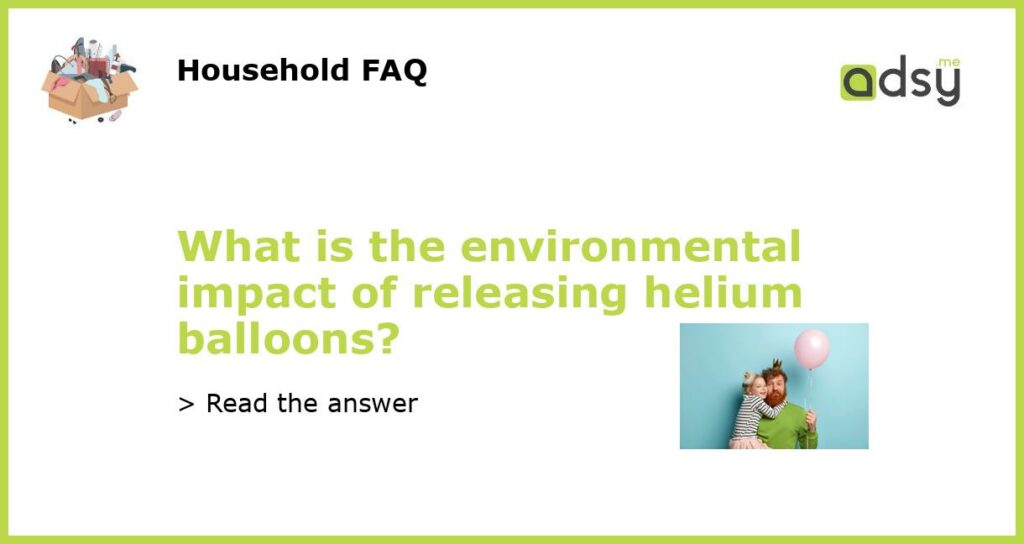The Increasing Popularity of Helium Balloons
Helium balloons have been a favorite at parties, celebrations, and events for decades. Their bright colors and the unique floating effect have made them a mainstay in decorations for different occasions. As a result, the demand for helium balloons has continued to increase over the years, with balloon sales skyrocketing during festive seasons. However, what many people don’t realize is that the environmental impact of releasing helium balloons into the atmosphere can be devastating.
The Environmental Toll of Helium Balloons
When helium balloons are released into the atmosphere, they float until the helium inside the balloon begins to deflate due to air pressure changes at high altitudes. As they deflate and fall back to the ground, they can cause harm to wildlife, marine animals, and the environment. The balloons can be mistaken for food by birds and sea creatures, leading to ingestion and choking, which can be fatal for the animals. Moreover, the ribbons or strings attached to helium balloons can also pose a danger to animals, with many becoming entangled, leading to injury or death.
The Impact on the Environment and the Economy
The environmental damage caused by helium balloons has far-reaching consequences on the planet’s ecosystems. It can take years for the balloons to decompose in the environment, exposing wildlife and marine animals to long-lasting danger. Furthermore, research shows that helium, the gas used to inflate the balloons, occurs naturally in limited and non-renewable reservoirs. The production of helium for commercial use is costly, and with the increasing demand for helium balloons, the cost is expected to rise in the future. As a result, the continued use of helium balloons could have serious economic implications and result in the depletion of the earth’s non-renewable resources.
Alternatives to Helium Balloons
There are many alternatives to helium balloons that do not have any impact on the environment. For instance, using biodegradable decorations, such as paper or fabric, can help to reduce environmental harm. Additionally, organic decorations, such as flowers or plants, could serve as eco-friendly alternatives to helium balloons. There are also tethered helium balloons, known as balloon kites, which are more environmentally-friendly as they can be reused and recycled easily.
The Need for Awareness and Environmental Responsibility
It is critical to spread awareness about the negative impact of helium balloons on the environment and encourage people to engage in responsible environmental practices. This could include curbing the use of helium balloons in events and looking for alternatives that will not harm the environment. Additionally, stakeholders such as manufacturers, event planners, and party supply shops could play an essential role in promoting environmentally-friendly alternatives and practices.






